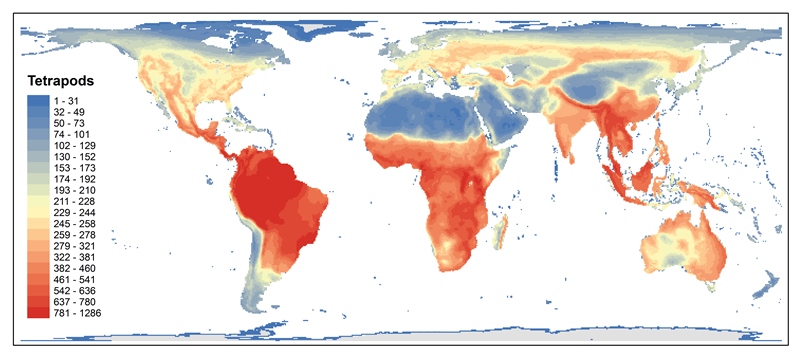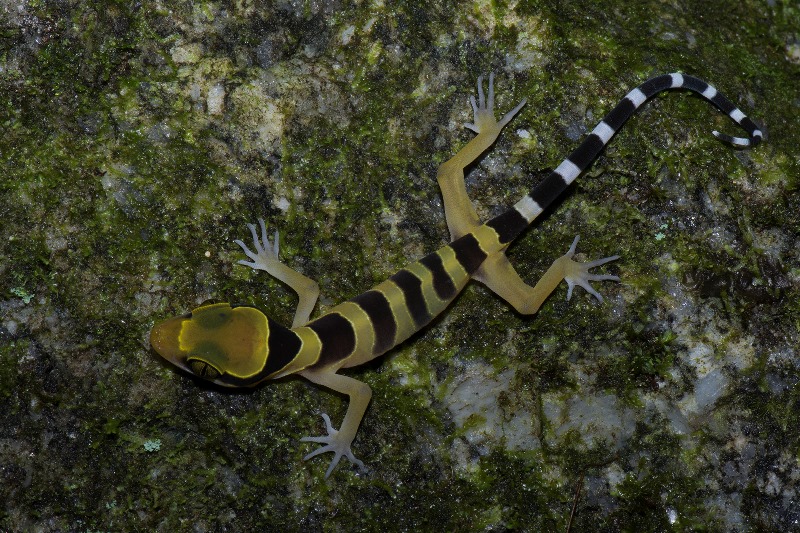
Above: Atlas of All Land Vertebrates
An international team of 39 researchers has produced the most comprehensive catalog and atlas of every reptile on earth, including 10,000 species of snakes, lizards, and tortoises.
According to the just published study in Nature Ecology & Evolution, the new “Atlas of Life" was created by linking the reptile information with existing maps for birds, mammals and amphibians--nearly 32,000 of land vertebrate species. The result is information that has been missing from much of the global conservation planning and prioritization projects constructed over the past 20 years.
According to first author Dr. Uri Roll, a BGU fellow in the Marco and Louise Mitrani Department of Desert Ecology at The Jacob Blaustein Institutes for Desert Research, “Lizards typically tend to have weird distributions and often like hot and dry places, so many of the newly identified conservation priority areas are in drylands and deserts. This isn't as much of a characteristic for birds or mammals, so we couldn't have guessed that in advance."
Dr. Roll also analyzed the overlap of different land-vertebrate groups with current conservation priorities and protected areas to explore the outcome of these initiatives designed to protect mammals and birds. Reptiles' overall distribution patterns have been less well-known until now. “It turns out that reptiles fare worse than mammals and birds, and within that lizards and turtles fare the worst."
To address these deficiencies, the researchers constructed a new prioritization plan that highlights those regions that need greater attention with the inclusion of new reptile distribution data. “We discovered that arid and semi-arid regions in various parts of the world have been under-prioritized for conservation and we will need to reevaluate our broadest conservation initiatives."
Prof. Shai Meiri from Tel Aviv University, who first planned and has been leading the project for the past 10 years says, “Mapping the distributions of all reptiles was considered too difficult to tackle. But thanks to a team of experts on the lizards and snakes of some of the most poorly known regions of the world, we managed to achieve this, and hopefully contribute to the conservation of these often elusive vertebrates that suffer from persecution and prejudice."
The International Union for the Conservation of Nature (IUCN) is currently classifying the species featured in a free, online map, rating them from “critically endangered" to “least concern." Once complete it will allow a range of stakeholders, from countries to conservation organizations, businesses and individuals to better understand the biodiversity in their area and how to protect it.
The ICUN maps will allow conservationists to inquire whether environmental efforts to date have been invested in the best way, and how they could be used most effectively. An analysis of current gaps in conservation revealed unexpected regions necessitating further conservation efforts to better protect reptiles. These include the Arabian Peninsula and the Levant, inland arid southern Africa, the Asian steppes, the central Australian deserts, the Brazilian scrubland, and the high southern Andes.
“Thanks to tools like our atlas, scientists can for the first time look at the terrestrial Earth in its entirety and make informed decisions about how to use conservation funding," says Dr. Richard Grenyer, associate professor in biodiversity and biogeography at Oxford University, “Now conservation has the data and tools required to bring planning up to the same level as the businesses and governments who might have an eye on land for other uses."

Media Coverage:
JSTOR Daily